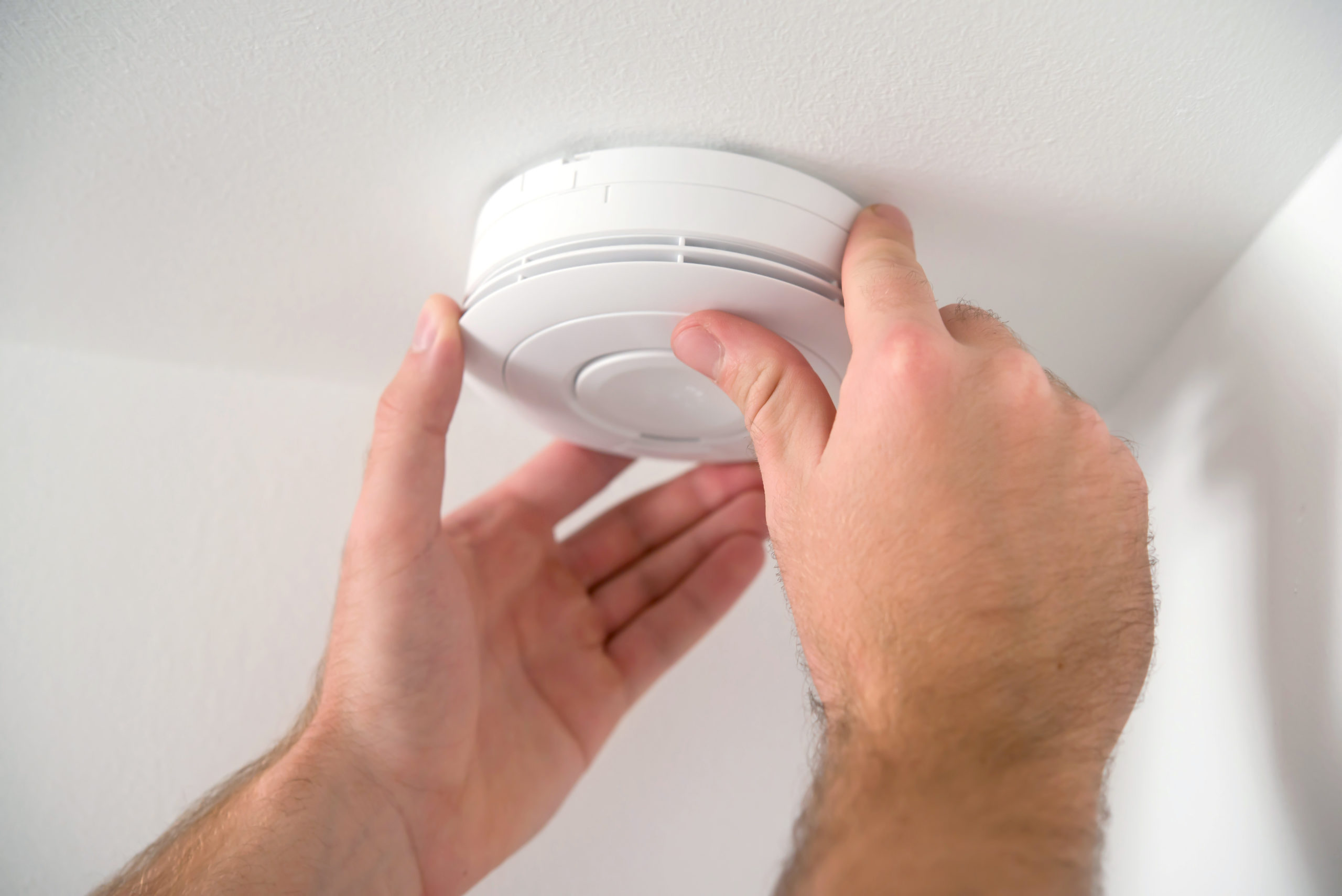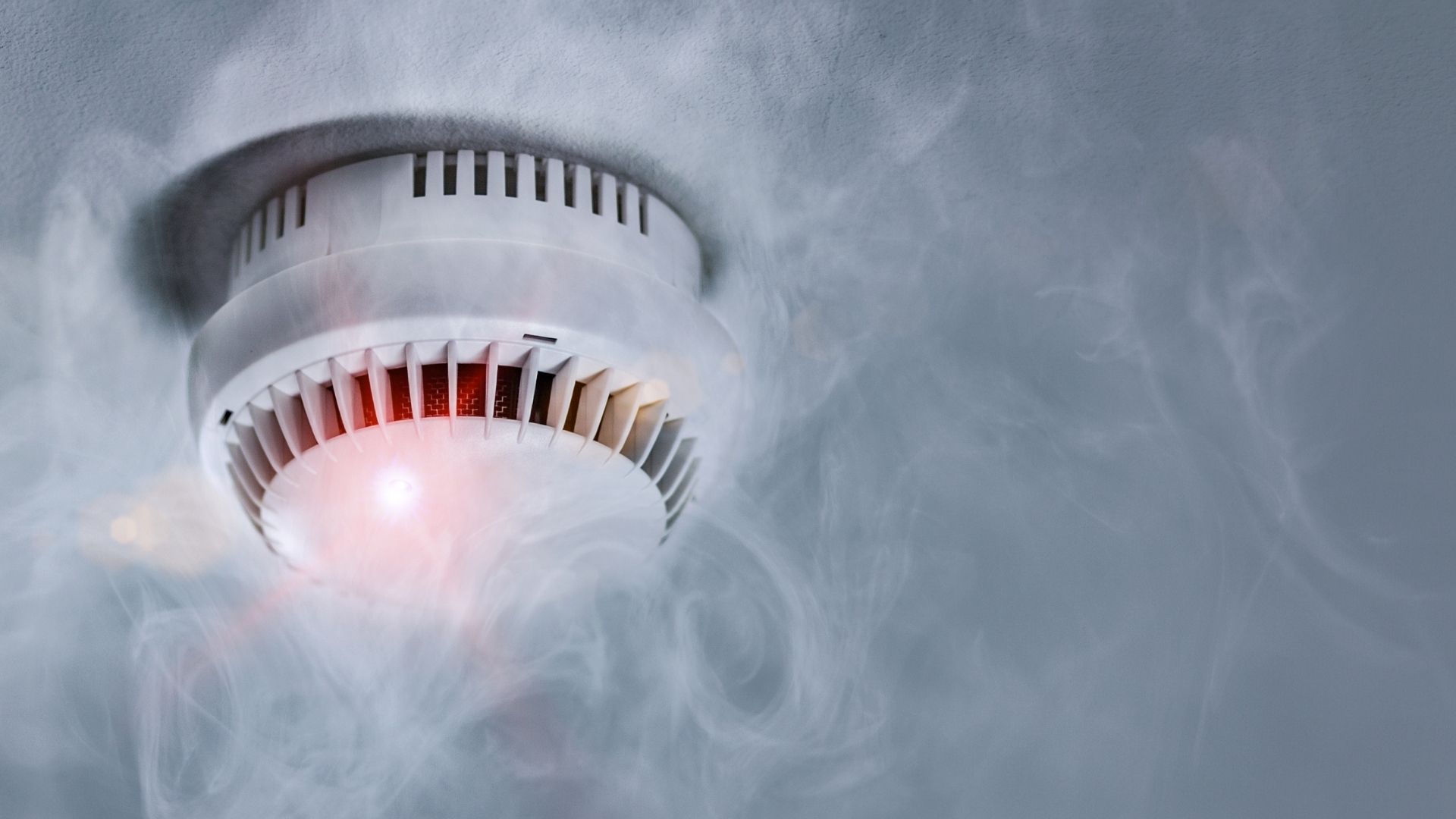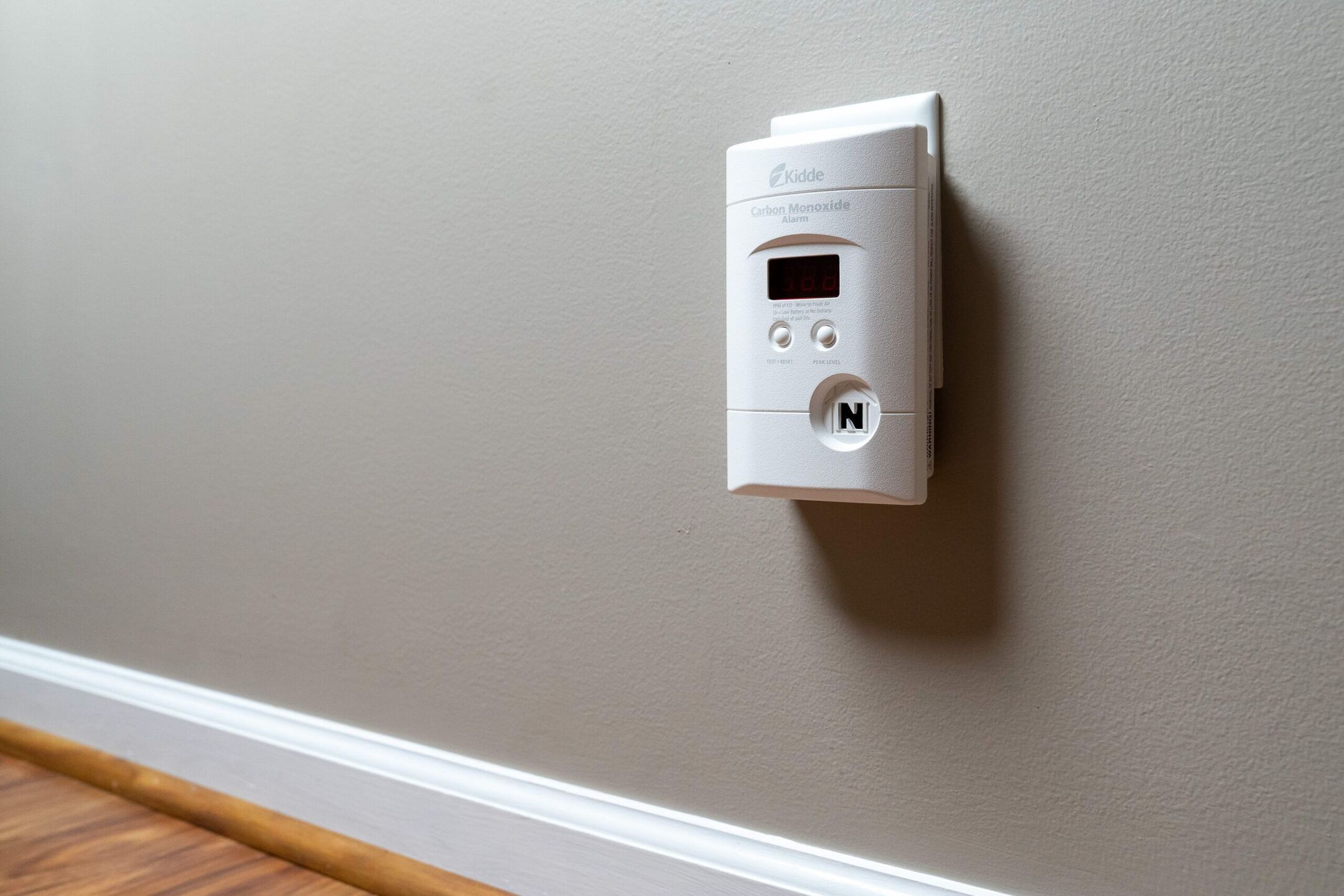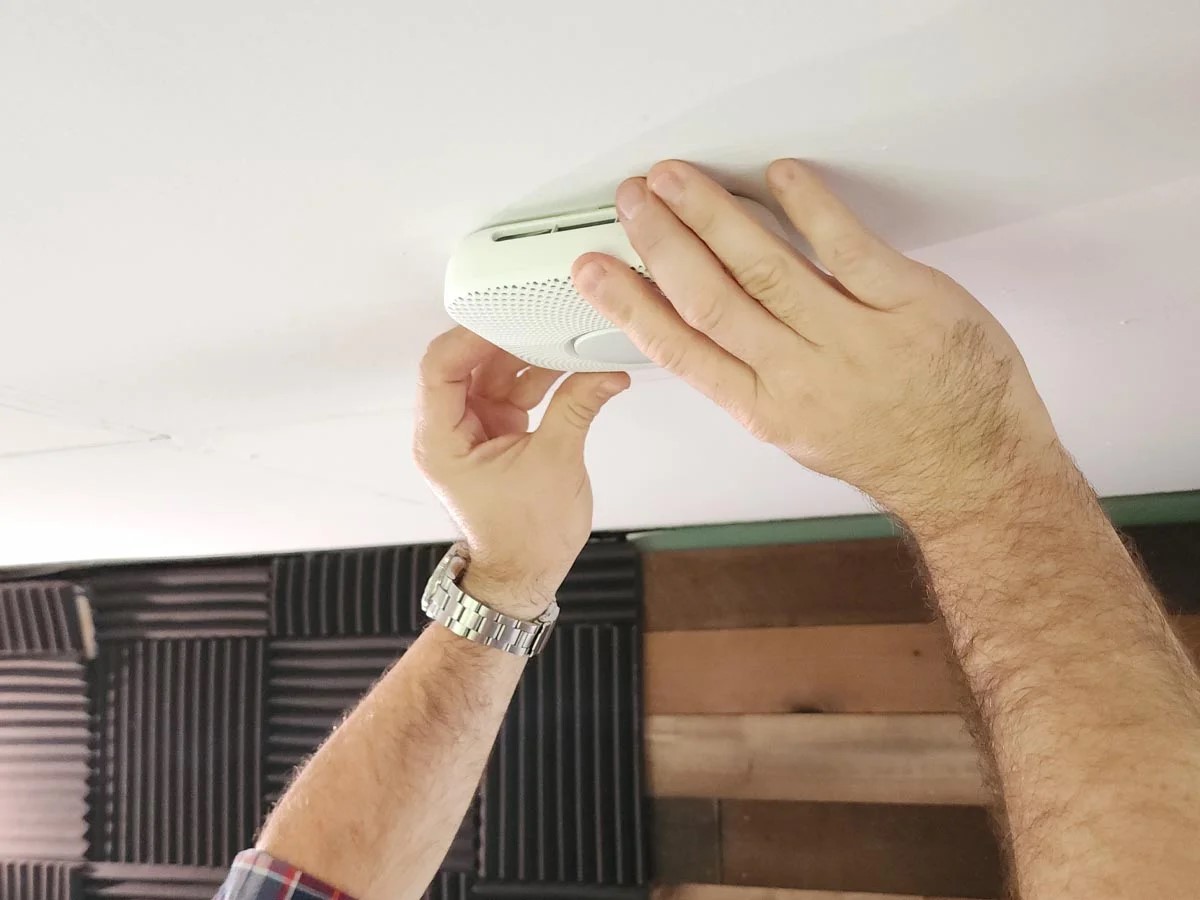Home>Articles>What Do The Beeps On A Carbon Monoxide Detector Mean


Articles
What Do The Beeps On A Carbon Monoxide Detector Mean
Modified: August 22, 2024
Learn about the meaning of beeps on a carbon monoxide detector in our informative articles. Stay safe and informed!
(Many of the links in this article redirect to a specific reviewed product. Your purchase of these products through affiliate links helps to generate commission for Storables.com, at no extra cost. Learn more)
Introduction
Carbon monoxide (CO) is a colorless and odorless gas that poses a serious health risk. It is produced by the incomplete combustion of fuels such as gas, oil, and wood. Breathing in high levels of carbon monoxide can lead to symptoms such as dizziness, headache, nausea, and even death. To protect ourselves and our loved ones from this silent killer, it is crucial to have a carbon monoxide detector installed in our homes.
Carbon monoxide detectors are designed to alert us when there is a threat of carbon monoxide in the air. These devices are equipped with sensors that detect the presence of CO and emit a loud beeping sound to warn us of the danger. Understanding the meaning behind these beeps is vital for our safety.
In this article, we will delve into the world of carbon monoxide detectors and explore the different beep patterns and their meanings. We will also discuss the importance of these beeps, how to troubleshoot common issues, and more. So, let’s get started and ensure that we are well-informed about the beeps on a carbon monoxide detector.
Key Takeaways:
- Understanding the different beep patterns of carbon monoxide detectors is crucial for responding to potential dangers. From low battery warnings to carbon monoxide alerts, knowing the meanings behind the beeps can save lives.
- Regular maintenance, prompt battery replacement, and immediate action during a carbon monoxide alert are essential for the effective functioning of detectors. Staying informed and proactive can protect against the silent threat of carbon monoxide gas.
Understanding Carbon Monoxide Detectors
Carbon monoxide detectors are devices designed to monitor the air for the presence of carbon monoxide gas. They are typically small and compact, easily installed on a wall or ceiling in various areas of the home. These detectors work by constantly sampling the surrounding air and analyzing it for any signs of CO gas.
Inside a carbon monoxide detector, there is a sensor that can detect even trace amounts of carbon monoxide. This sensor is often made up of a combination of chemicals that react with CO gas, triggering an electrical signal. When the sensor detects a certain level of CO gas, it sends a signal to the control panel of the detector.
The control panel of the carbon monoxide detector is responsible for processing the signals from the sensor and responding accordingly. It monitors the level of CO gas in the air and triggers the alarm system when dangerous levels are detected. This alarm system is what emits the loud beeping sound to alert occupants of the potential danger.
It’s important to note that carbon monoxide detectors have a limited lifespan and should be replaced according to the manufacturer’s guidelines. Over time, the sensors in the detector may become less sensitive or no longer function properly, reducing their ability to accurately detect CO gas. Regular maintenance and testing of the detectors are crucial to ensure their reliability.
Now that we have a basic understanding of how carbon monoxide detectors work, let’s explore the significance of the beeping sounds produced by these devices.
Importance of Beep Sounds
The beeping sounds emitted by carbon monoxide detectors play a crucial role in alerting us to the presence of potentially dangerous levels of carbon monoxide gas. These sounds serve as a warning signal, allowing us to take immediate action to protect ourselves and our loved ones.
One of the significant advantages of beep sounds is their ability to grab our attention. Unlike visual alerts or messages on a screen, beeping sounds cut through the noise and immediately capture our focus. This is especially important when carbon monoxide leaks occur during the night when we may be asleep. The loud and distinctive beeps are designed to wake us up and prompt us to take immediate action.
The beeping sounds also provide a universal and easily recognizable alert. Regardless of language or cultural differences, the sound of a carbon monoxide detector beeping indicates a potential threat that requires attention. This ensures that everyone in the vicinity, including visitors or guests, can understand the urgency of the situation and take appropriate measures.
Furthermore, beep sounds serve as a continuous reminder of the danger posed by carbon monoxide gas. When we hear the beeping sound, it serves as a constant reminder to take action, whether it’s evacuating the area, contacting emergency services, or investigating the source of the leak. This ongoing reminder helps prevent complacency and ensures that we remain vigilant in keeping our homes safe from carbon monoxide poisoning.
It’s essential to familiarize ourselves with the specific beep patterns and their meanings, as different patterns indicate different levels of danger. By understanding these beep sounds, we can differentiate between a low battery warning, a carbon monoxide alert, or even an end-of-life indicator. This knowledge empowers us to respond appropriately and take the necessary steps to address the situation.
In the next section, we will dive into the various beep patterns and meanings associated with carbon monoxide detectors, providing you with a comprehensive understanding of what each beep indicates.
Different Beep Patterns and Meanings
Carbon monoxide detectors utilize different beep patterns to communicate various alerts and warnings to users. Understanding these beep patterns and their meanings is crucial for responding appropriately to potential dangers. Let’s explore the most common beep patterns and their associated meanings:
- Single Beep: A single beep from a carbon monoxide detector typically indicates a low battery warning. When the detector detects a low battery level, it will emit a short beep at regular intervals, alerting you to replace the batteries. It is important to address this warning promptly by replacing the batteries with new ones to ensure the continued functionality of the detector.
- Intermittent Beeping: An intermittent beeping sound at regular intervals may indicate that the carbon monoxide detector has reached its end-of-life. Detectors have a limited lifespan, usually around 5-7 years, after which they may no longer function optimally. If you hear an intermittent beeping sound, check the user manual or contact the manufacturer to determine if the detector needs to be replaced.
- Continuous Beeping: A continuous and loud beeping sound from a carbon monoxide detector signals a carbon monoxide alert. This means that the detector has detected potentially hazardous levels of carbon monoxide in the air. If you hear this alarm, evacuate the premises immediately, move to a safe location, and contact emergency services for assistance. Carbon monoxide is a deadly gas, and swift action is necessary to prevent harm.
It is important to note that different brands or models of carbon monoxide detectors may have slight variations in beep patterns and meanings. Therefore, always consult the user manual or manufacturer’s instructions specific to your detector to understand the beep patterns specific to your device.
Regularly testing your carbon monoxide detector is crucial to ensure that it is functioning correctly and can accurately detect carbon monoxide gas. Most detectors have a test button that, when pressed, will initiate a test sequence to verify the functionality of the detector and emit a test beep pattern.
By familiarizing yourself with the different beep patterns and their meanings, you can respond swiftly and appropriately to protect yourself and others from the dangers of carbon monoxide.
In the next section, we will discuss the low battery warning in more detail and provide tips for troubleshooting common issues with carbon monoxide detectors.
Low Battery Warning
A low battery warning is a common beep pattern emitted by carbon monoxide detectors. This beep serves as a reminder that the batteries in the detector need to be replaced. Ignoring or neglecting a low battery warning can potentially compromise the effectiveness of your carbon monoxide detector.
When the battery level in a carbon monoxide detector drops to a certain threshold, the detector will emit a single beep at regular intervals. This beep pattern is designed to grab your attention and prompt you to take action. It is essential to address the low battery warning promptly to ensure that your detector can continue functioning optimally.
Here are some steps to follow when you hear a low battery warning:
- 1. Silence the Detector: Locate the source of the beeping sound, which is usually the carbon monoxide detector itself. Press the “Silence” or “Reset” button on the detector to temporarily stop the beeping. This will give you a moment to address the low battery situation without the constant beeping.
- 2. Replace the Batteries: Once the detector has been silenced, remove the old batteries from the detector. It is recommended to use brand new, high-quality batteries to ensure the longevity and reliability of your carbon monoxide detector. Insert the new batteries into the detector following the appropriate polarity markings (usually indicated on the battery compartment).
- 3. Test the Detector: After replacing the batteries, test your carbon monoxide detector to ensure it is functioning correctly. Most detectors have a test button that, when pressed, will initiate a test sequence and emit a test beep pattern. This will verify that the detector is operational and ready to detect carbon monoxide gas.
- 4. Regular Maintenance: To prevent future low battery warnings, make it a habit to check and replace the batteries in your carbon monoxide detector on a regular basis. It is recommended to replace the batteries at least once a year, or according to the manufacturer’s guidelines. Some detectors may also have a battery indicator that will alert you to low battery levels before the beep pattern begins.
- 5. Take Note of the Date: Record the date of battery replacement or the installation of new batteries. This will help you keep track of when the batteries are due for replacement and ensure that your carbon monoxide detector remains in optimal working condition.
Remember, a low battery warning is not something to be taken lightly. Ignoring this warning can put you at risk as the detector may fail to alert you in the event of a carbon monoxide leak. Stay vigilant, keep your detector properly maintained, and respond promptly to any low battery warnings to keep yourself and your loved ones safe.
Now that we have covered the low battery warning, let’s move on to discussing carbon monoxide alerts and the necessary actions to take when you hear the continuous beeping sound.
If your carbon monoxide detector is beeping, it could indicate a low battery, a high level of carbon monoxide, or a malfunction. Check the user manual for specific beep patterns and what they mean. If in doubt, evacuate and call for help.
Read more: Why Does Carbon Monoxide Detector Beeps
Carbon Monoxide Alert
A carbon monoxide alert is a critical beep pattern emitted by carbon monoxide detectors to indicate the presence of potentially dangerous levels of carbon monoxide gas in the air. When you hear the continuous beeping sound, it is crucial to take immediate action to protect yourself and others from the harmful effects of carbon monoxide.
Here are the steps to follow when you hear a carbon monoxide alert:
- 1. Evacuate the Area: The first and most important step is to immediately evacuate the area where the carbon monoxide alert is sounding. Move to a safe location outside of the building, away from potential sources of carbon monoxide, such as gas appliances or the garage. Do not waste time trying to identify the exact source of the leak before evacuating.
- 2. Call Emergency Services: Once you are safely outside, contact your local emergency services (e.g., 911) to report the carbon monoxide alert and request immediate assistance. Inform them of the beeping sound and the possibility of carbon monoxide exposure. Follow their instructions and cooperate fully with emergency responders.
- 3. Do Not Return Until Cleared: It is crucial not to re-enter the building until it has been deemed safe by trained professionals. Carbon monoxide is a dangerous gas that cannot be seen or smelled, and exposure to high levels of it can be fatal. Wait for emergency responders to thoroughly assess the situation, identify and mitigate the source of the carbon monoxide, and confirm it’s safe to enter.
- 4. Seek Medical Attention if Necessary: If you or anyone else in the vicinity experiences symptoms of carbon monoxide poisoning, such as headache, dizziness, nausea, or confusion, seek medical attention immediately. Carbon monoxide poisoning can be life-threatening, and prompt medical treatment is essential for recovery.
- 5. Contact a Professional: After the immediate danger has been resolved and you have been cleared to re-enter the premises, contact a qualified professional to inspect and repair any malfunctioning appliances, ventilation systems, or other potential sources of carbon monoxide. It’s crucial to address the issue to prevent future carbon monoxide leaks.
Remember, a carbon monoxide alert is a serious matter that requires immediate action. Ignoring the beeping sound or attempting to silence the alarm without taking appropriate measures can have severe consequences. Always prioritize your safety and the safety of others by following the necessary evacuation procedures and contacting emergency services.
In the next section, we will discuss the end-of-life indicator in carbon monoxide detectors and how to troubleshoot common issues you may encounter with these devices.
End of Life Indicator
An end-of-life indicator is a feature found in many carbon monoxide detectors to alert users when the device has reached the end of its operational lifespan. Over time, the sensors in carbon monoxide detectors may become less sensitive or no longer function properly, diminishing their ability to detect carbon monoxide gas accurately. It is essential to pay attention to the end-of-life indicator and replace the detector accordingly.
When a carbon monoxide detector reaches the end of its life, it will often emit an intermittent beeping sound at regular intervals. This beeping pattern serves as a reminder that the detector should be replaced to maintain your home’s safety.
To determine the specific requirements and recommended lifespan of your carbon monoxide detector, refer to the manufacturer’s instructions or user manual. In general, carbon monoxide detectors have a lifespan of around 5-7 years, but this can vary depending on the model and manufacturer.
Here are some steps to take when you hear the end-of-life indicator:
- 1. Identify the Beeping Sound: Locate the source of the intermittent beeping sound, which is typically your carbon monoxide detector. The end-of-life indicator may differ slightly between different models, but it usually consists of a series of beeps at regular intervals, signaling that it is time to replace the detector.
- 2. Note the Date of Installation or Replacement: Keep track of the date your carbon monoxide detector was installed or last replaced. This will help you monitor its lifespan and know when it is due for a replacement. Many models also have labels on the back or inside the detector indicating when it should be replaced.
- 3. Replace the Detector: When the end-of-life indicator is activated, it is time to replace your carbon monoxide detector. Follow the manufacturer’s instructions for proper installation and placement. Ensure that you choose a detector that meets the necessary safety standards and quality requirements.
- 4. Properly Dispose of the Old Detector: Electronic waste should be disposed of correctly, including your old carbon monoxide detector. Check with your local waste management or recycling facility for the proper disposal methods for electronic devices. Some manufacturers may also offer recycling programs for their detectors.
Replacing your carbon monoxide detector when the end-of-life indicator is activated is crucial to maintaining a safe and effective detection system in your home. By staying vigilant and aware of the lifespan of your detector, you can ensure that you are protected from the dangers of carbon monoxide for years to come.
In the next section, we will discuss common troubleshooting tips for carbon monoxide detectors, helping you address any issues you may encounter with these devices.
Troubleshooting Common Issues
Like any electronic device, carbon monoxide detectors can encounter issues from time to time. Understanding and troubleshooting these common problems can help ensure the proper functioning of your detector and maintain a safe living environment. Here are some common issues you may encounter with carbon monoxide detectors and tips for troubleshooting them:
- 1. False Alarms: If your carbon monoxide detector frequently goes off without any apparent reason, it could be due to factors such as humidity, dust, or other environmental conditions. Start by checking if the detector is properly located away from sources of moisture, heat, or ventilation. If the issue persists, clean the detector following the manufacturer’s instructions and ensure that it is mounted securely.
- 2. Malfunctioning Sensor: If you suspect that the sensor in your carbon monoxide detector is not functioning correctly, try resetting the device. Refer to the user manual for instructions on how to reset your specific model of detector. If the issue continues, it may be time to replace the detector, as sensors can wear out over time.
- 3. Intermittent Beeping: If your carbon monoxide detector emits intermittent beeping sounds, it may indicate a low battery or end-of-life warning. Check the battery level and replace the batteries if necessary. If the beeping persists after battery replacement, it could be an indication that the detector has reached the end of its lifespan and needs to be replaced.
- 4. Test Button Not Working: If the test button on your carbon monoxide detector does not initiate a test sequence or emit any sound, check the batteries first. Ensure they are properly installed and have enough power. If the problem persists, contact the manufacturer for further assistance or consider replacing the detector.
- 5. Silence Button Not Working: The silence button on your carbon monoxide detector is designed to temporarily silence the alarm during non-emergency situations. If the silence button does not stop the beeping sound, double-check if you are pressing the correct button. If the issue continues, consult the user manual or contact the manufacturer for guidance.
Remember, troubleshooting these common issues requires careful attention to detail and adherence to the manufacturer’s instructions. If you are unsure about any troubleshooting steps or if the problem persists, it is recommended to consult a professional or contact the manufacturer for guidance.
Regular maintenance and periodic testing of your carbon monoxide detector are crucial to ensure its proper functioning. Follow the manufacturer’s guidelines for maintenance, testing, and replacement to keep your home protected from the dangers of carbon monoxide gas.
Now that we have covered troubleshooting common issues, let’s wrap up and summarize the importance of carbon monoxide detectors in maintaining a safe living environment.
Conclusion
Carbon monoxide detectors are an essential safety device in any home or building, alerting us to the presence of potentially harmful levels of carbon monoxide gas. Understanding the meanings behind the beep sounds emitted by these detectors is vital for our safety and the safety of our loved ones.
In this article, we explored the importance of the beep sounds produced by carbon monoxide detectors and their ability to grab our attention, provide a universal alert, and serve as a continuous reminder of the danger. We discussed the different beep patterns and their meanings, including the low battery warning, carbon monoxide alert, and end-of-life indicator.
When you hear a low battery warning, it is crucial to promptly replace the batteries to ensure the continued functionality of the detector. A carbon monoxide alert, indicated by continuous beeping, requires immediate evacuation of the area and contacting emergency services. The end-of-life indicator serves as a reminder to replace the detector as it reaches the end of its operational lifespan.
We also provided troubleshooting tips for common issues with carbon monoxide detectors, such as false alarms, malfunctioning sensors, and non-functional test or silence buttons. Regular maintenance, testing, and proper placement of detectors are essential for their optimal performance.
By staying informed about the beeps on carbon monoxide detectors and taking appropriate action when needed, we can significantly reduce the risk of carbon monoxide poisoning and ensure the safety of our homes and families.
Remember to consult the user manual or contact the manufacturer for specific instructions and guidelines for your carbon monoxide detector. Stay proactive, stay vigilant, and prioritize the safety of yourself and those around you. Together, we can protect against the silent threat of carbon monoxide gas.
Frequently Asked Questions about What Do The Beeps On A Carbon Monoxide Detector Mean
Was this page helpful?
At Storables.com, we guarantee accurate and reliable information. Our content, validated by Expert Board Contributors, is crafted following stringent Editorial Policies. We're committed to providing you with well-researched, expert-backed insights for all your informational needs.















0 thoughts on “What Do The Beeps On A Carbon Monoxide Detector Mean”